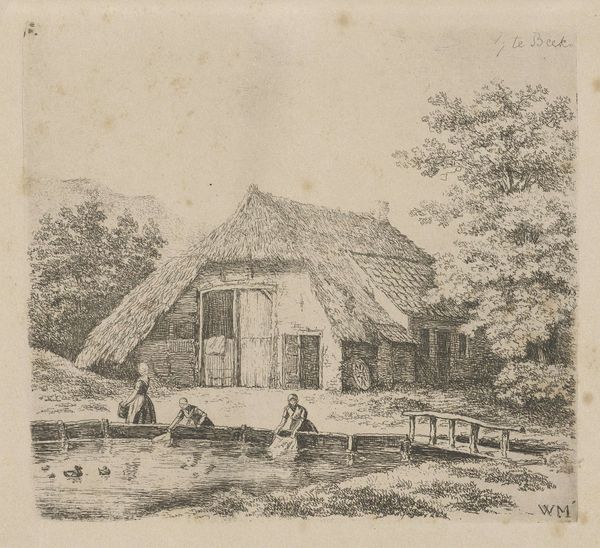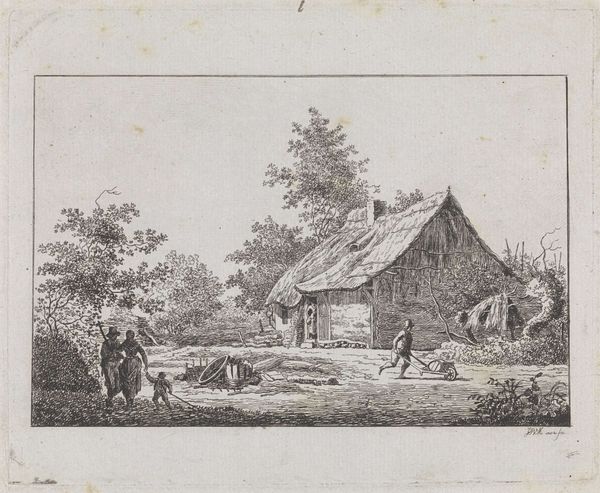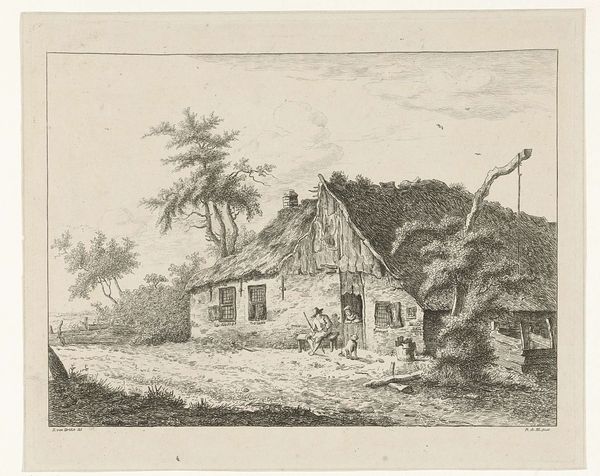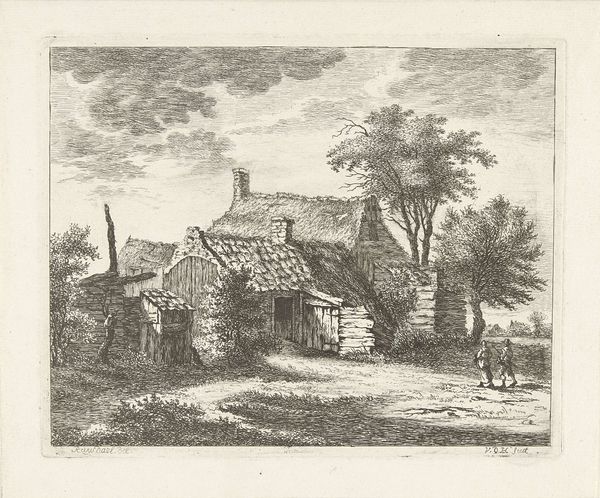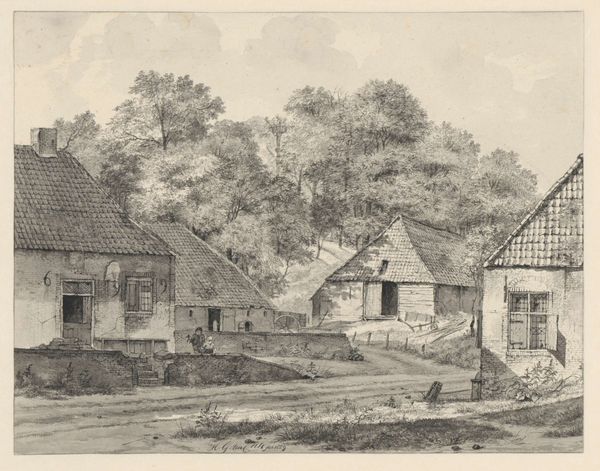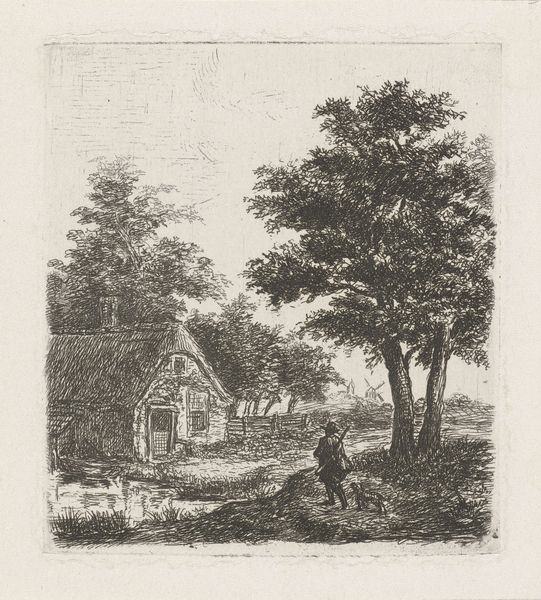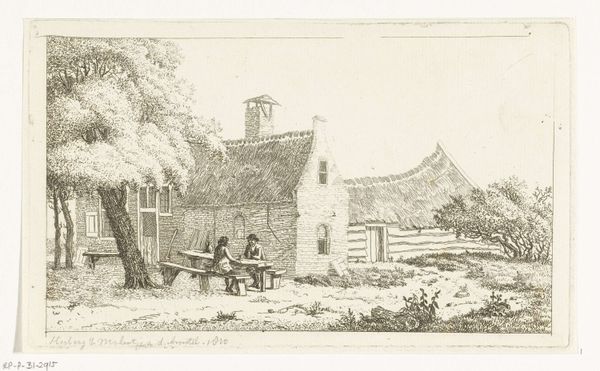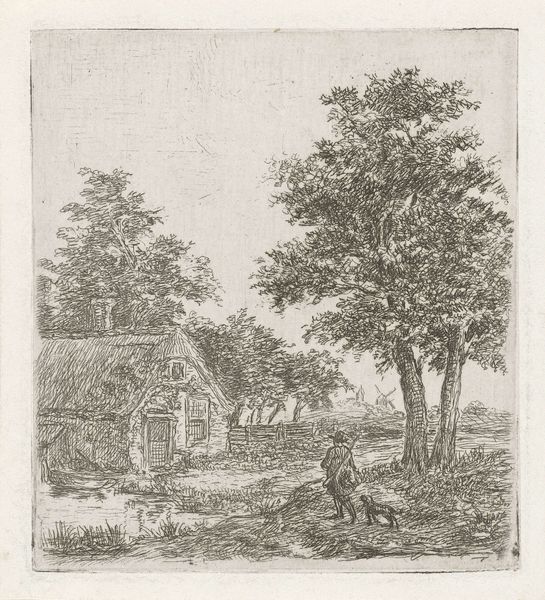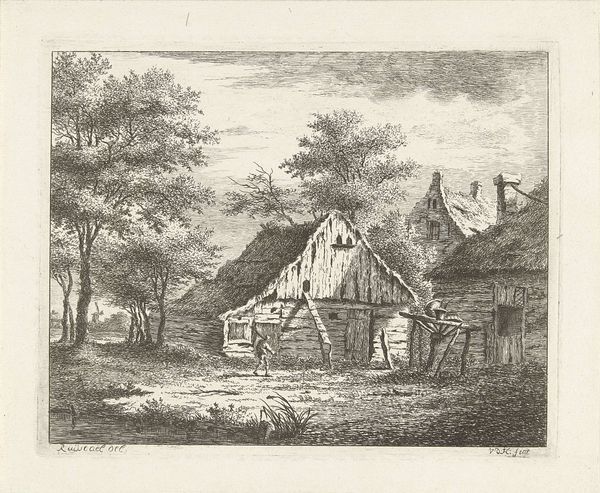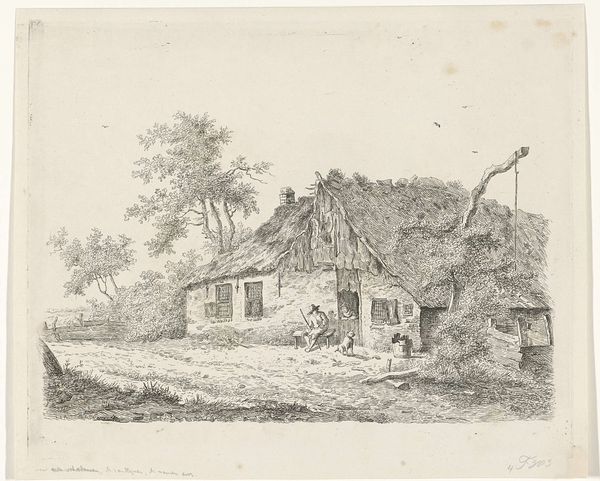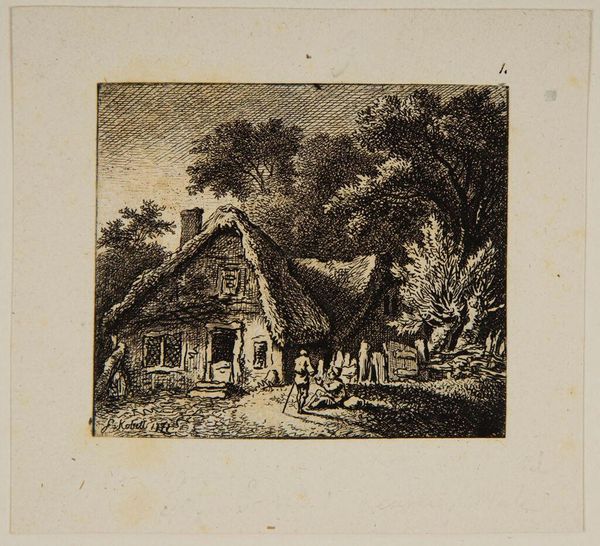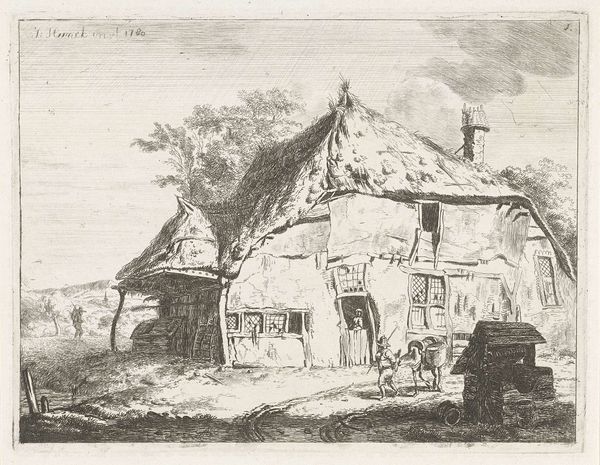
etching
#
etching
#
landscape
#
etching
#
genre-painting
Dimensions: height 137 mm, width 151 mm
Copyright: Rijks Museum: Open Domain
Curator: Christiaan Wilhelmus Moorrees' etching, "Three Women Doing Laundry in Beek," likely created between 1811 and 1867, offers a glimpse into rural life. What's your initial take on it? Editor: It feels quite intimate, doesn't it? The way the artist has captured this everyday chore evokes a sense of community and the mundane realities of labor. It also feels...melancholy, somehow. Curator: The image is a good example of genre painting, focusing on daily life rather than grand historical narratives. I am particularly drawn to the placement of this kind of humble activity. It's placed next to a farm. It highlights how agrarian life formed society and dictated a family’s roles in the past. Editor: Precisely. These women's work isn't romanticized; we see the reality of it. I can’t help but think about how gender roles and the unpaid labor of women are essential parts of the societal framework in agrarian societies. Also, it subtly showcases social inequalities. The women's work contrasts starkly with what would likely be the landowners who own this bucolic space behind them. Curator: The artist's use of etching to create varying tones really works. The detail in the thatch roof versus the softer rendering of the trees contributes to depth. It also subtly draws attention to labor against leisure. What could this placement of the main scene next to this picturesque farm represent? Editor: It feels like the artist uses light and shadow to elevate ordinary actions. The landscape acts not merely as backdrop but as the reason for the composition’s existence, reinforcing its narrative of how women and labor make these lands arable. And of course, it raises crucial questions about which narratives are elevated and become ‘art.’ Curator: It reminds us how much art is shaped by social and political forces. In depicting rural life so closely, we gain valuable perspectives of history that don't always surface in more "important" artistic avenues, such as portraiture. Editor: Yes, through this portrayal of something so seemingly simple, we encounter complex dynamics of work, community, gender and access. This seemingly straightforward etching invites us to look deeper, consider how history has unfolded, and continues to resonate with our current landscape. Curator: A very thoughtful response. Editor: Thank you.
Comments
No comments
Be the first to comment and join the conversation on the ultimate creative platform.
